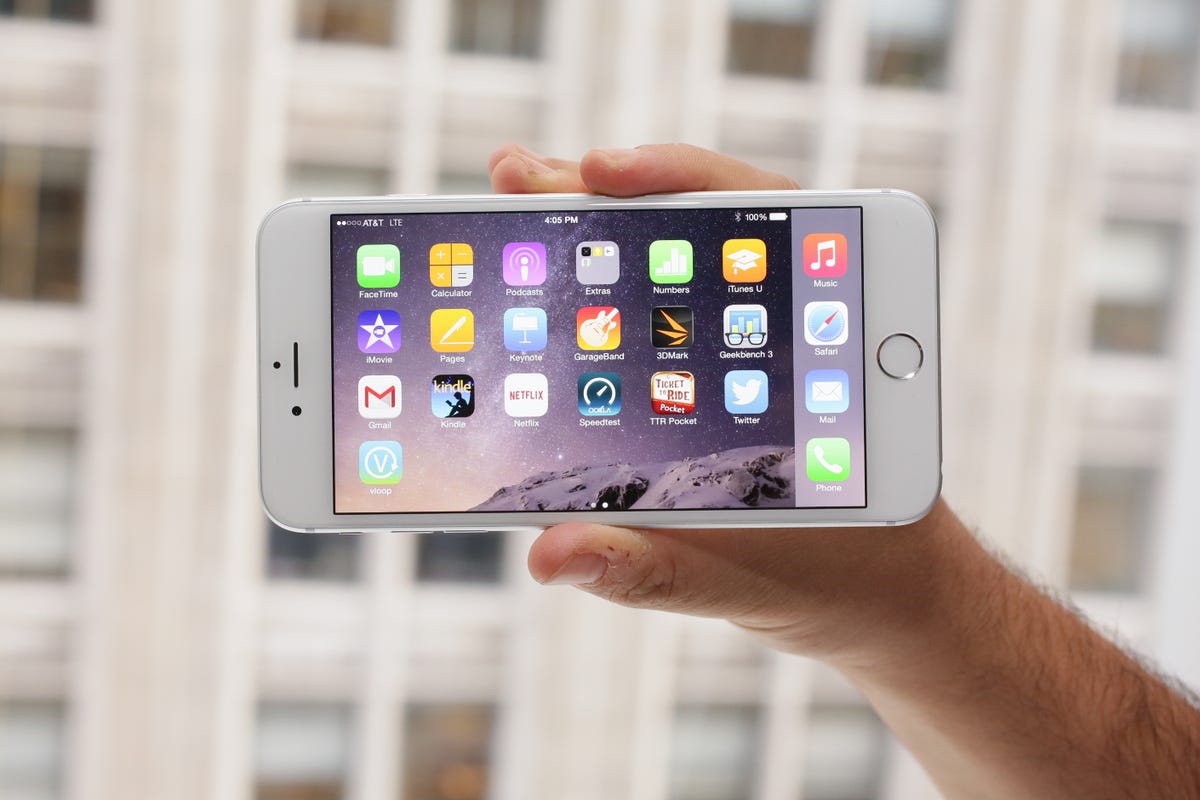
Sarah Tew/CNET
It happened. Something I didn’t want, or expect. I’m a big-phone guy.
Phablets are a big trend. Have been for years. I’ve seen them, I’ve appreciated them, and I avoided them.
Why? Because I liked a pocketable phone, that’s why. I liked having something that fit in one hand, was magically small, and yet versatile. The iPhone fit that perfectly. Some Android phones, like the 2013 Moto X , managed to pull it off, too.
My favorite old phones were super-small yet super-versatile. I was a big fan of the Blackberry Pearl . I could carry my email around in a tiny little package. It was like a little life raft. That was my type of smartphone.
I carry an iPad most of the time, and I still do…or, until recently, did. The phone didn’t need to be huge. With two small kids, having a small phone made things a lot easier. I could hold it with one hand and not worry about dropping it.
Then came the large phones.
The Galaxy Notes, the big HTC One M8 , the iPhone 6 Plus . I was the person who saw the 6 Plus and thought it looked absurd. I said, back in September, I wouldn’t pick it over the smaller iPhone 6. I still think it’s awfully big. But in the last few weeks, I’ve suddenly gotten used to big phones. I’ve learned to accept them. Why?
Because these phones have surrounded me. They’re unavoidable. And after spending months with some of the best ones out there, I’ve realized what a lot of fellow CNET editors were trying to tell me. When you go up to a larger size phone, it’s hard to go back.
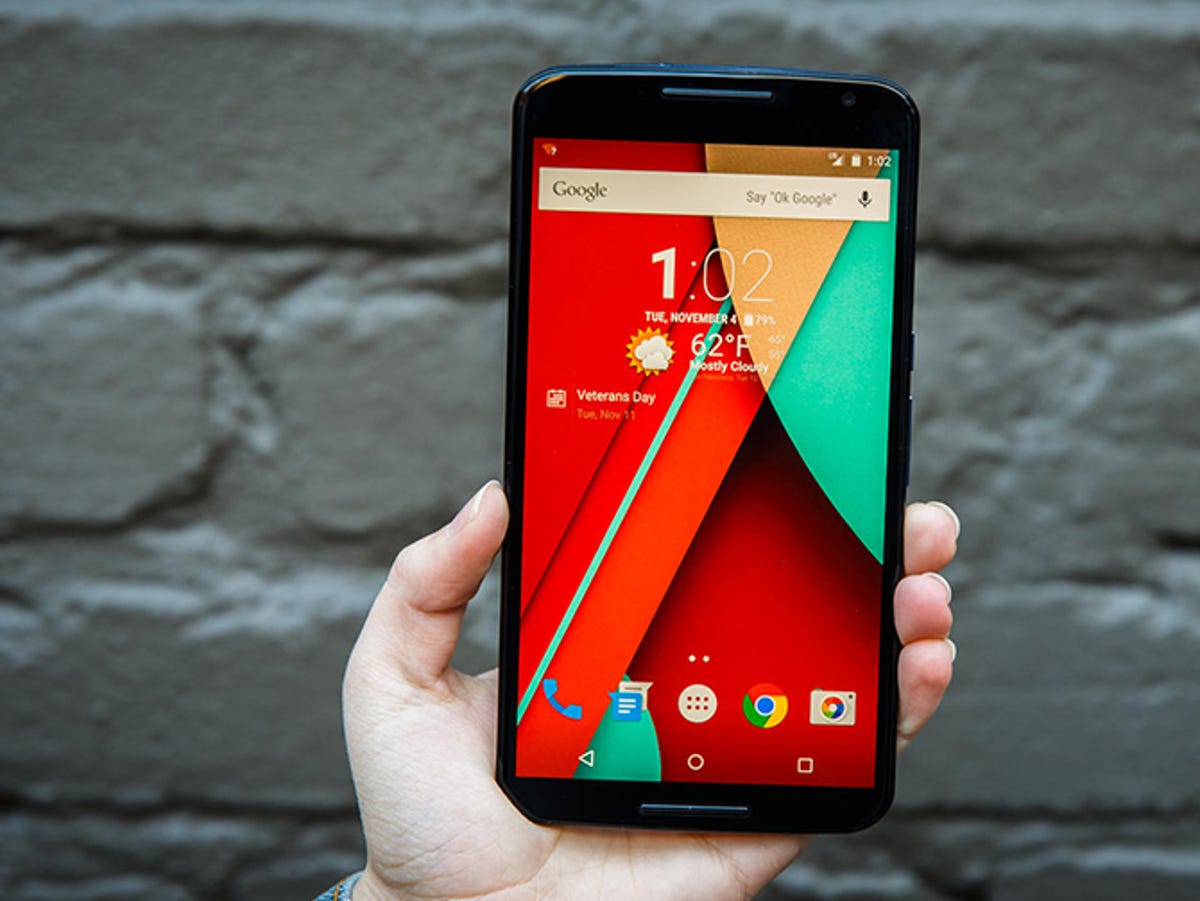

CNET
Nexus 6: Lollipop and near-tablets
I started with the Nexus 6 . (It, along with the other phones mentioned here, is a manufacturer-supplied loaner review sample or a CNET-owned device.) It was the first Android phone to get Lollipop, and I wanted to spend time with the new OS and how it worked with Android Wear. The gigantic 5.9-inch Nexus 6 and I were going to have to become friends.
I love Motorola’s recent phone designs, but the Nexus 6 is a step too far. It’s really large and thick, to the point where it suddenly seems to stop being a phone at all. I leaned into that though, and thought of it as a shrunken-down Nexus 7 tablet with phone service. In that regard, it was pretty good.
As a reference model for Lollipop and a base station to pair Bluetooth-connected wearables, the Nexus 6 had a rock-solid battery life and a nice big screen to set up everything I needed.
The Nexus 6 set up me up for getting used to larger phones, because there’s practically nothing bigger.
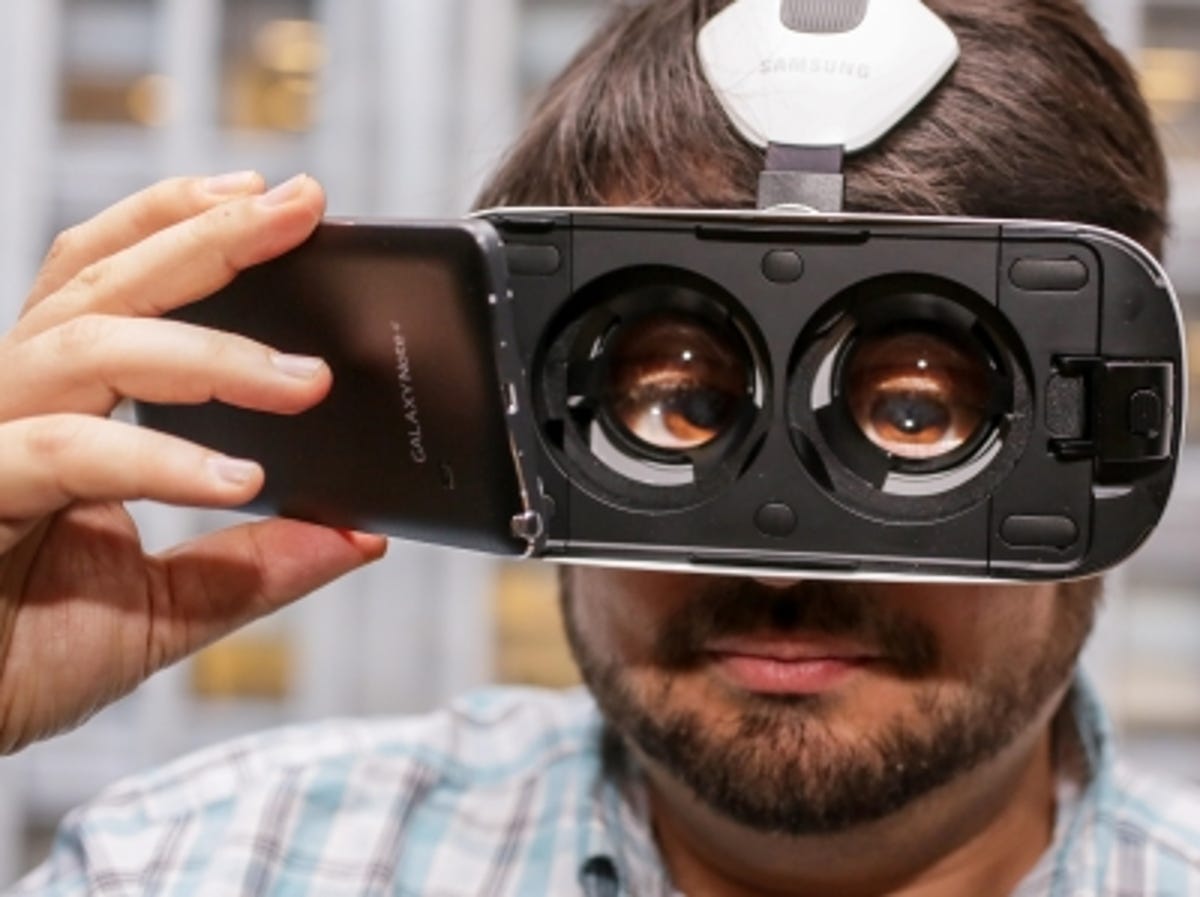

Sarah Tew/CNET
Samsung Note 4 and Gear VR
Virtual reality was what really sucked me in. The Samsung Gear VR debuted as the first real mobile virtual reality headset last December, but it only works with one phone: the 5.7-inch Samsung Galaxy Note 4 . An excellent, excellent phone, but a big one.
I got acquainted with the Note 4 as part of the Gear VR experience, but I ended up spending a lot of time with the phone on its own, too. Gear VR is amazing (seriously, read my review), but the phone’s even better on its own. Most people at CNET agree it’s the best phablet around. And the funny thing is, compared to other giant phones like the iPhone 6 Plus and Nexus 6, it feels kinda compact. It started to seriously change my mind on what a “large phone” was.
After using the Samsung Galaxy S5 for a while last year for Android Wear testing, and the Nexus 5 as well, the Note 4 felt like a gradual step-up. But the advantages to having that larger screen suddenly started expanding. It’s a far more compact-feeling phone than the Nexus 6, and yet it also works wonderfully with VR, too. Could the Note 4 have acted as my magical stepping-stone? I decided to go back to the iPhone 6 Plus to find out.
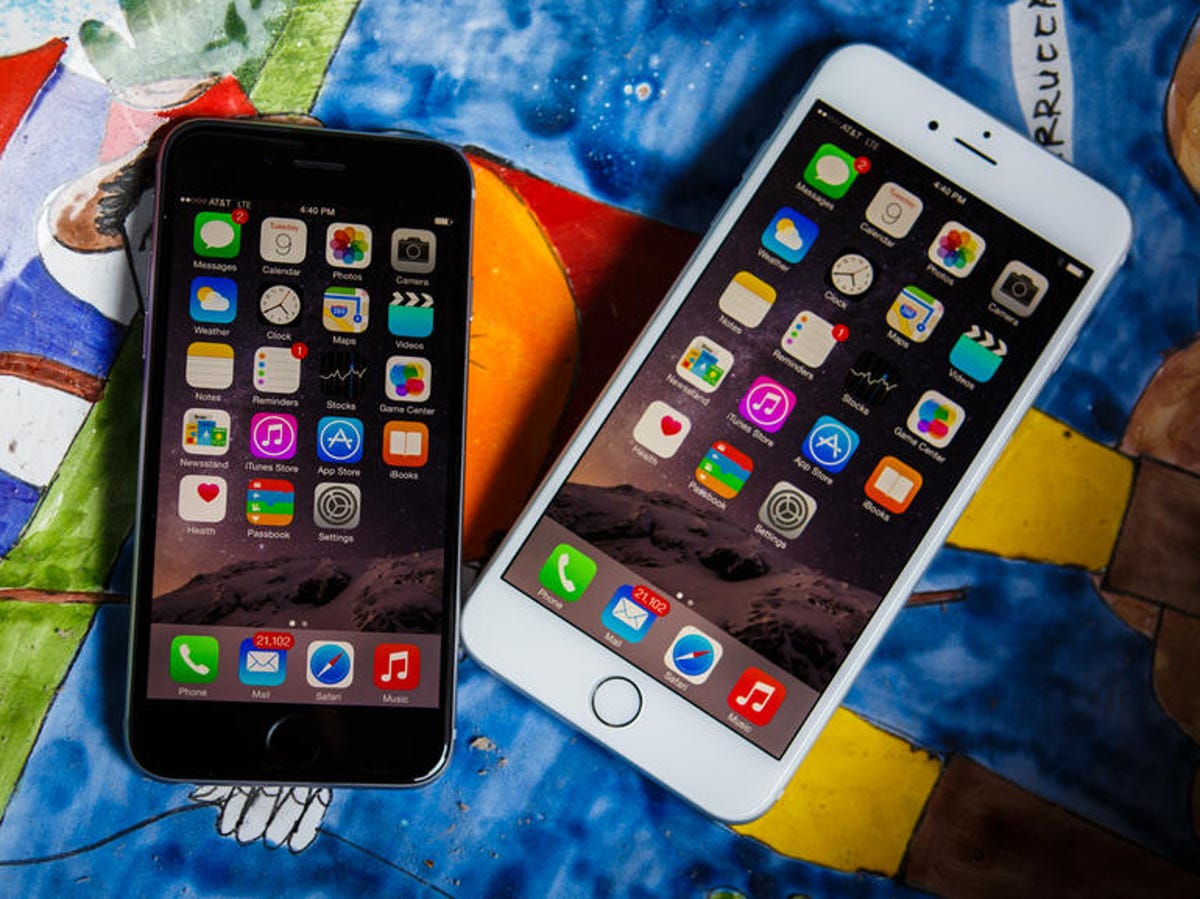

CNET
iPhone 6 Plus: Switching for a month, perhaps for good
The final experiment was switching from the iPhone 6 , my favorite-sized phone as of September, to the 6 Plus . Just to see what it would do for me, compared to these other big phones.
The experiment continued over a family trip to England, and over the span of the Consumer Electronics Show in Las Vegas. And it’s still happening. I’m considering making the move to the 6 Plus permanent.
How did this happen? The same way it happened for many people: the lure of better battery life, which for me amounts to a moderate boost (I drain phone batteries fast). Why not just carry an extra battery pack, as I originally said I would? Because, well…I was won over by the larger screen.
The larger screen ended up being an advantage for on-the-spot photos and photo editing…no surprise, but it helped make the iPhone my main CES camera. More importantly, it was easier to show people what I shot on the fly, which became nearly as important. And as a general reading device, it’s close enough to a Kindle and not too far from a tablet. It’s great for games, too, needless to say. It still doesn’t replace what an iPad can do (or a laptop for that matter), but it does enough things well enough that I can rely on it longer before looking for a larger tablet. It holds down the fort…sometimes for so long that I stop looking for a tablet at all.
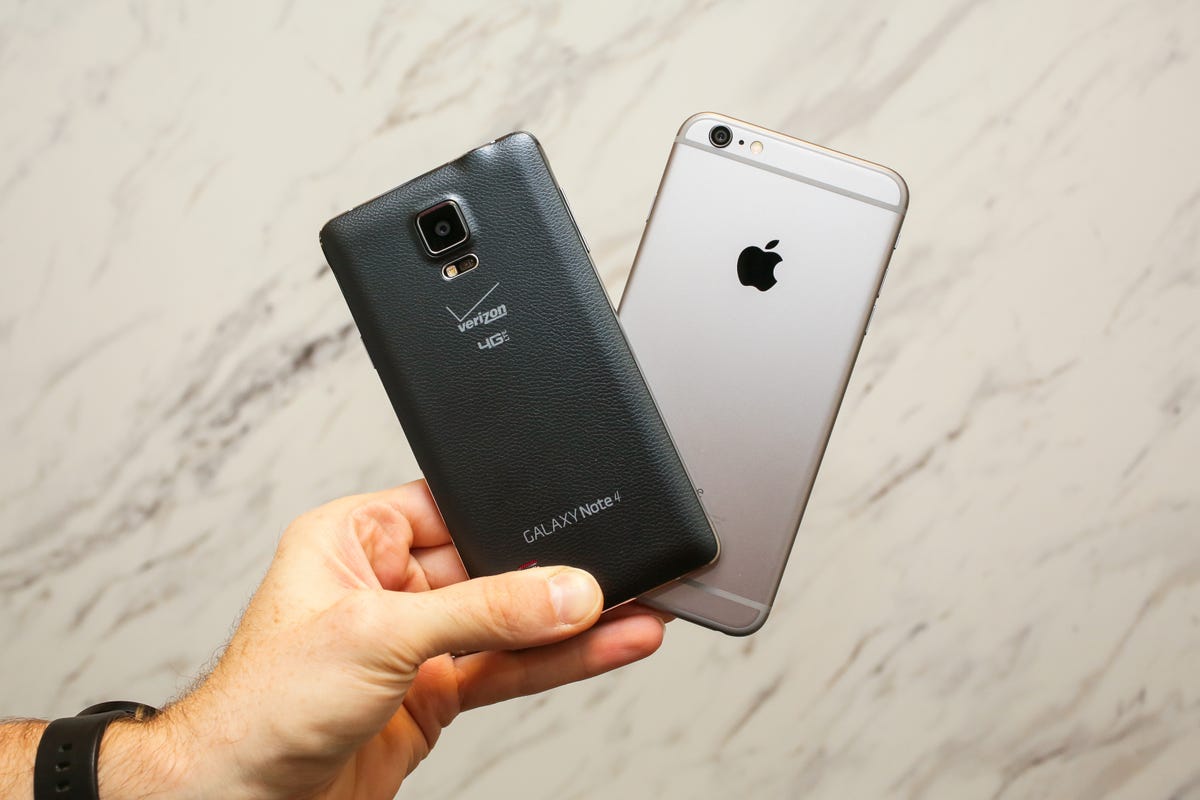

Sarah Tew/CNET
Big phones: Annoying, but oh so versatile
There are advantages to big phones. Battery life, which also means they’re more accommodating for always-connected wearables and peripherals. More screen real estate, which makes them more useful for connected accessories and as handheld remotes, too. And, as I’ve discovered, they’re better as stand-in devices: for virtual reality, for sharing content with others and maybe even for long-distance selfies-on-a-stick.
I’ve learned to stop worrying and love the big phones, because I realize that these phones are at the center of all I use now: connected mobile devices, headsets, armbands and everything else in the ever-expanding world of connected things. They’re essential. I guess a larger one makes sense.
I’m still surprised that most of the phones I turn to now are super-large ones. But I wouldn’t be surprised if lots of people slowly, over time, graduate to them like I did. It’s a bit like the big-TV phenomenon that TV editor David Katzmaier insisted I’d succumb to: no matter how giant a TV screen feels as first, over time it somehow ends up feeling normal. At times it feels like SUV-culture applied to phones, but right now, I’d pick a larger phone over a smaller one as my essential go-to device.
It still might not make sense for you, but I’ve come around. I admit I’ve seen a new light. Bigger phones work for me. I find them hard to put down. And even though I appreciate smaller phones, I’m not sure I’m really ever going to go back.



